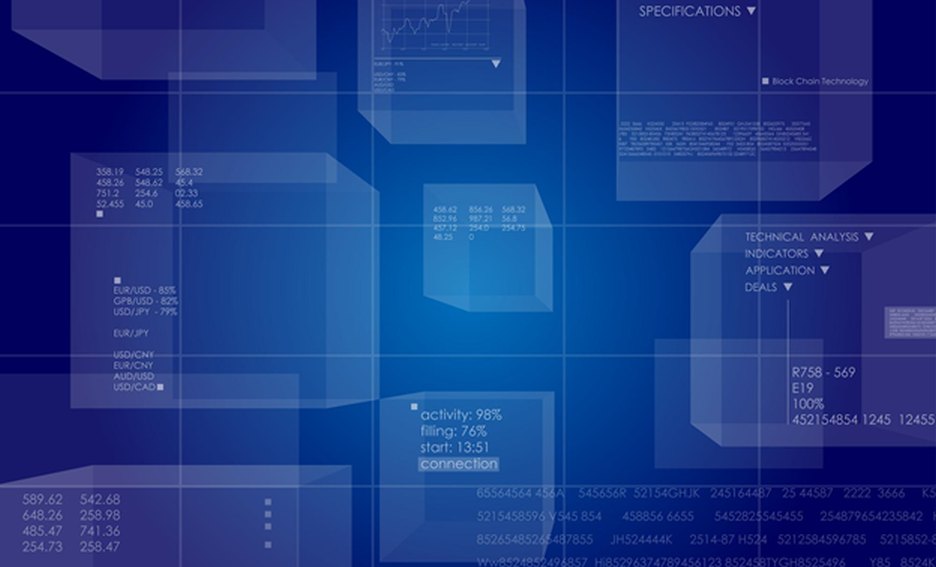Decentralization in Layer 0 Blockchains: Benefits and Limitations Explained

Cryptocurrency and blockchain technology continue to garner increased user adoption thanks to their decentralized nature. This allows individuals to build permissionless and censorship-resistant DeFi systems that shift control away from intermediaries and centralized authorities, such as banks and governments. But why is decentralization important to blockchain technology?
Decentralization and Its Importance in Blockchain Technology
Decentralization refers to the distribution of a network’s power, authority, and decision-making across multiple autonomous/independent individuals. In a decentralized blockchain, control is dispersed among a network of participants who collectively make decisions and take actions based on shared protocols and rules.
Every participating node maintains a copy of the distributed ledger. They can also verify transactions and add new blocks to the chain. This ensures that no single point of failure or control exists and that the network is more resistant to censorship and hacking attempts.
Several factors can measure the degree of decentralization in a blockchain network. They include the number of nodes, the distribution of computing power, and the participation level of different stakeholders.
Decentralization is crucial in blockchain technology. It helps ensure the system’s security, transparency, and integrity. And with no single point of failure, decentralization also promotes immutability, independence, and trust.
By adopting a decentralized model, blockchains network can operate without a central authority, reducing transaction costs and increasing efficiency. It also helps to build trust among participants, increasing the adoption and acceptance of blockchain technology in various sectors.
However, decentralization in traditional blockchains can also create coordination, security, and governance challenges, particularly in complex systems with multiple nodes and network participants, hindering network performance.
As a result, developers often compromise. Recently, the development of Layer 0 blockchains offers a viable solution, and here’s how.
Decentralization and Layer 0 Blockchains
Layer 0 is the base protocol or network infrastructure upon which a blockchain runs. It includes the hardware and software components that enable nodes to communicate and validate transactions.
One way that Layer 0 blockchains can enhance decentralization in blockchain technology is by improving the scalability of the network. As network users and transaction volumes increase, the network can become congested and slow. This can lead to delays and higher fees.
Layer 0 blockchains serve as the underlying foundation of an ecosystem. They allow multiple Layer 1s to be stacked as dApps, followed by Layer 2s to enhance scalability. This naturally improves network performance, making it easier for users to participate while reducing the risk of centralization by a few large nodes or miners.
Another way that Layer 0 can enhance decentralization is by improving the network’s security. In a blockchain network, the ledger’s security and integrity depend on the consensus mechanism and the nodes’ validation process. By implementing more robust security measures at the protocol level, Layer 0 can reduce the risk of attacks or malicious behavior by individual nodes or groups, making the network more resilient and decentralized.
Finally, Layer 0 can enhance decentralization by enabling interoperability between blockchains and networks. By creating standards and protocols for cross-chain communication and collaboration, Layer 0 can promote a more decentralized ecosystem where users have greater choice and control over their assets and data. This can reduce the dominance of a few large platforms or networks and promote a more diverse and competitive ecosystem of decentralized applications and services.
Advantages of Decentralization in Layer 0 Blockchains
Decentralization is a critical feature of Layer 0 blockchains and provides many benefits. Here are some of the advantages:
Enhanced Security
The most significant advantage of decentralization in Layer 0 blockchains is its enhanced security. Decentralization diminishes the potential for network compromise by malicious actors.
Data and assets are distributed among many participating nodes in a decentralized network. This makes gaining network control harder for an attacker. Cryptographic innovations, such as digital signatures and hash functions, ensure data is immutable. As a result, data cannot be tampered with or altered without detection.
Improved Transparency
Another advantage of decentralization in Layer 0 blockchains is the increased transparency and immutability of the system. Because data is stored on a publicly distributed ledger, verifying transactions’ authenticity and accuracy becomes much easier. This transparency also helps to prevent fraud. Any attempts to manipulate the data can be easily detected and corrected.
Increased Accessibility
Central authorities usually require a high degree of personal documentation and credit history, leaving many individuals unbanked or underbanked. With more independent decision-making on the blockchain, anyone and everyone can participate in the network, thus increasing financial inclusion.
Lowered Costs
Decentralization in Layer 0 blockchains can also increase efficiency and cost savings. In a decentralized network, intermediaries do not need to verify or approve transactions. This increases the transaction processing speed and reduces transaction costs.
Additionally, decentralization in Layer 0 blockchains can lead to increased innovation and experimentation. Because no central authority controls the network, participants can develop new applications and services without fear of censorship or interference.
Challenges in Implementing Decentralization in Layer 0 Blockchains
Decentralization is critical in blockchain technology, with Layer 0 blockchains delivering the foundation upon which decentralized systems are built. However, implementing decentralization in Layer 0 blockchains presents several challenges that must be overcome to ensure the security and integrity of the system. Some of the key challenges include:
Technical Limitations
The tamper-proof characteristic of data stored on a blockchain can sometimes be a double-edged sword. Should maintenance need to be performed, such as security breaches, it would be difficult to execute. This is because any changes or upgrades to the protocol will need to take all the individual nodes into account.
Governance Issues
Decentralization in Layer 0 blockchains can also lead to challenges in governance. In a decentralized network, decision-making is distributed among many participants, making coordinating and reaching a consensus on critical issues challenging. This can lead to disputes and conflicts, thus undermining the network’s security and stability.
Additionally, the lack of clear governance structures can present difficulties in implementing changes or updates to the network. Layer 0 blockchains must balance maintaining decentralization and enabling effective decision-making. The development of DAOs and other governance models can address these challenges.
Scalability Concerns
Among the main challenges of implementing decentralization in layer 0 blockchains is scalability. Layer 0 blockchains must be able to handle high transaction volumes per second to be useful for real-world applications.
However, as network users and transactions increase, the data that needs to be processed and stored also increases. As a result, it becomes increasingly difficult to achieve consensus across multiple participating nodes.
This leads to slower transaction times and higher fees. Layer 0 blockchains have struggled with these issues, leading to proposals for specialized scaling solutions like sharding. These solutions aim to improve scalability while maintaining decentralization.
Security Risks
Security is another challenge in implementing decentralization in Layer 0 blockchains. Blockchains are inherently secure, as they adopt innovative technologies to ensure data cannot be tampered with or altered.
However, Layer 0 blockchains are particularly vulnerable to attacks because they are responsible for the low-level consensus mechanisms that ensure the entire network’s security. A successful attack on a Layer 0 blockchain could compromise the whole network, leading to the loss of valuable assets and data.
As a result, Layer 0 blockchains must be designed with security in mind from the outset, allowing them to withstand attacks from both external and internal sources.
Overall, implementing decentralization in Layer 0 blockchains requires careful consideration of various technical and governance issues. It is a complex and ongoing process that requires continuous development to help achieve blockchain technology’s full potential.
Case Studies: Layer 0 Blockchain Projects
Venom, Polkadot, Avalanche, and Cosmos are examples of Layer 0 blockchain projects. This means they are focused on providing the underlying infrastructure and framework for decentralized applications to run on. Here’s a brief insight into each project:
Venom
Venom is a blockchain project with a heterogenous multilayer-blockchain architecture. It is developed by the Venom Foundation,as the first foundation to be granted a license to operate a blockchain by the ADGM, Abu Dhabi.
The blockchain network consists of the masterchain, which functions as the Layer 0 foundation; workchains, which allow the building dApps; and shardchains, which enhance scalability.
Multiple Layer 1 blockchains can be stacked on the masterchain to create a customizable solution that meets financial tools or services’ unique needs. At the same time, this reduces the need for a separate bridge as the Layer 1s can instantly communicate with each other.
Venom also utilizes a state-of-the-art dynamic sharding mechanism. This enables the network to scale or merge automatically to meet transaction demands accordingly, ensuring an efficient and scalable network with high throughput and low latency.
Polkadot
Polkadot is a multi-chain framework founded by Gavin Wood, one of Ethereum’s co-founders. The protocol provides a platform for building blockchains that interoperate/communicate with each other.
Polkadot achieves this by creating a main relay chain and multiple parachains, specialized blockchains that can be tailored for specific use cases. These parachains can be connected to the main relay chain, allowing for seamless communication and interoperability.
Polkadot supports a wide range of use cases. By allowing developers to create specialized parachains, Polkadot can accommodate a variety of dApps, each with its unique functionalities. Additionally, Polkadot’s consensus mechanism, called Nominated Proof-of-Stake, offers more efficiency and security than traditional consensus mechanisms.
Another advantage of Polkadot is its strong community of developers and supporters. Polkadot has a large and active community that is continually working on new features and improvements. This community has contributed to the development of over 300 parachains, making Polkadot one of the most active blockchain projects in the world.
Avalanche
Avalanche is a high-performance, open-source blockchain that provides a scalable and secure network for dApps development. It uses a consensus mechanism called Avalanche-X, designed to provide split-second finality. This means that transactions are confirmed almost instantly, making Avalanche one of the fastest blockchain platforms in the world.
Avalanche also supports smart contracts and various programming languages, making it a flexible developer platform. This flexibility is crucial because it allows developers to create dApps using the programming languages they are most comfortable with. Avalanche also uses a unique “virtual machine” that is optimized for performance, making it easier to create complex dApps.
Another benefit of Avalanche is its low transaction fees. Because Avalanche can process many transactions per second, the cost per transaction is significantly lower than many other blockchain platforms. This makes it more affordable for developers to create dApps on Avalanche, which could help drive the platform’s adoption.
Cosmos
Cosmos is a network of independent blockchains that interoperate with each other. This interoperability is achieved through Cosmos’s Inter-Blockchain Communication (IBC) protocol. The blockchain project aims to solve the issue of blockchain fragmentation by providing a standard for cross-chain communication, allowing different dApps to communicate seamlessly.
One of Cosmos’s key benefits is flexibility. Cosmos uses a modular architecture that allows developers to create custom blockchains that can interoperate with others in the Cosmos ecosystem. With this, developers can build specialized blockchains for unique use cases. Furthermore, these specialized blockchains can still communicate with other blockchains in the network.
Cosmos has also seen strong adoption, with several dApps already built on its network. Additionally, Cosmos has a strong community of developers and supporters who continuously work on new features to improve the network.
Future Outlook for Decentralized Layer 0 Blockchains
Looking ahead, the future outlook for decentralized Layer 0 blockchains is quite promising. Some of the key trends and developments to watch out for include the following:
Increased adoption: Decentralized Layer 0 blockchains will receive increased adoption as more developers and organizations recognize the benefits of decentralization. This will lead to more dApps development across various industries, including finance, healthcare, supply chain management, and more.
Interoperability: Interoperability is a critical feature for the success of Layer 0 blockchains. Interoperability will become increasingly important as blockchains and decentralized networks grow. This will enable seamless communication and collaboration between different systems.
Privacy and security: Privacy and security will remain a top priority for Layer 0 blockchains, as these are critical requirements for ensuring the trust and confidence of users. We expect continued innovation in areas such as zero-knowledge proofs, homomorphic encryption, and other privacy-preserving technologies.
Governance: Governance will also be a critical factor in the future of Layer 0 blockchains. As these systems grow and become more complex, effective governance structures will become increasingly crucial. Effective governance structures will ensure that Layer 0 blockchains remain transparent, inclusive, and aligned with the needs of their users.
Conclusion
Decentralization in Layer 0 blockchains provides several advantages, such as improved security, greater transparency, and increased resilience against censorship and attacks. It also allows for more democratic decision-making.
However, some challenges are associated with decentralization. These include increased complexity and cost, slower transaction processing times, and difficulty in coordinating development and upgrades.
Additionally, decentralization may lead to power imbalances. This is because some nodes may have more influence than others. In addition, there may be difficulties in achieving consensus among participants with different interests and goals.
Yet, the future outlook for Layer 0 blockchains is bright. As more organizations and individuals recognize the potential of these systems, we expect to see continued growth and innovation in this space. This will lead to the development of innovative decentralized applications and networks.

